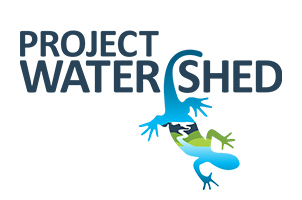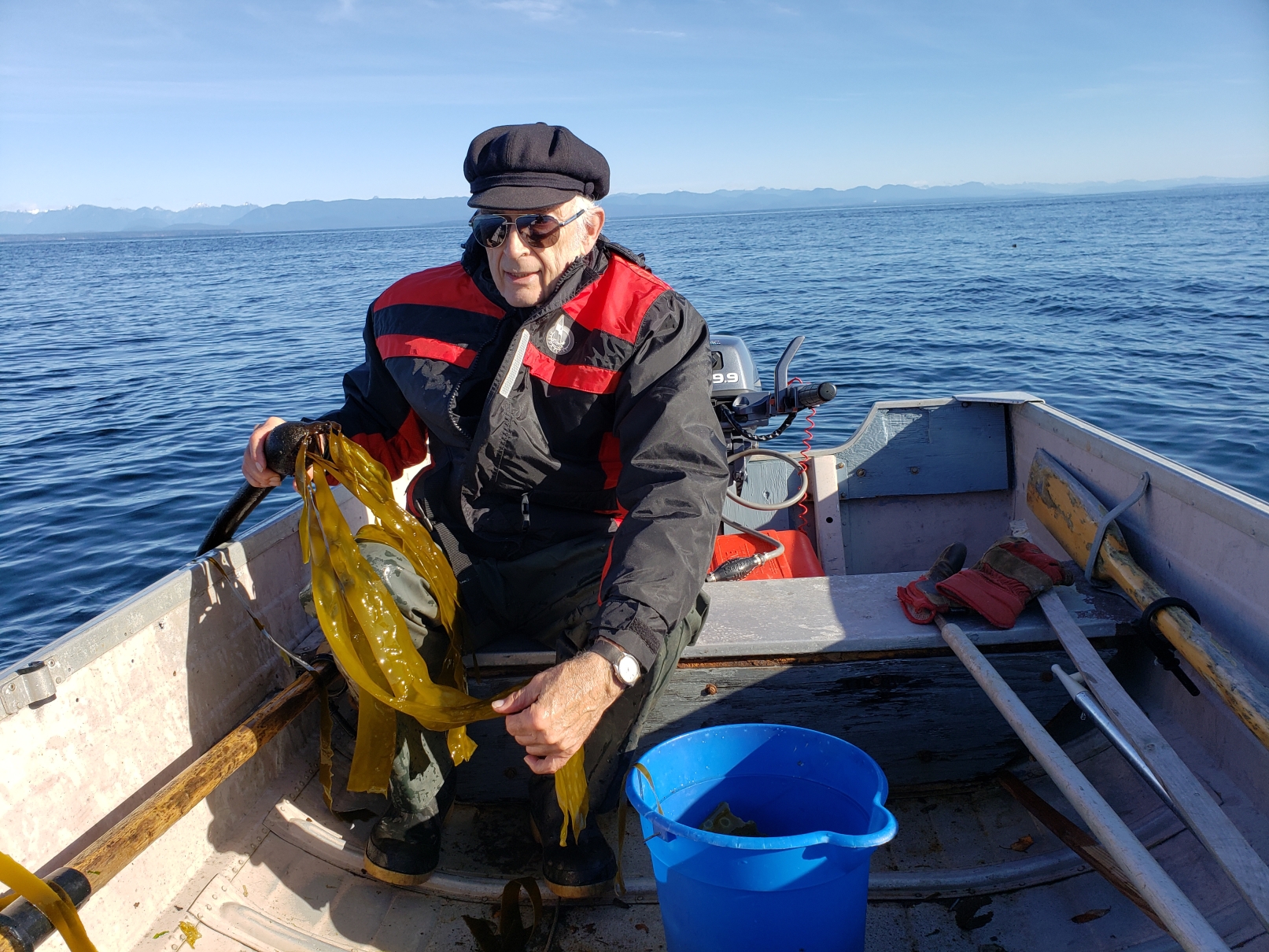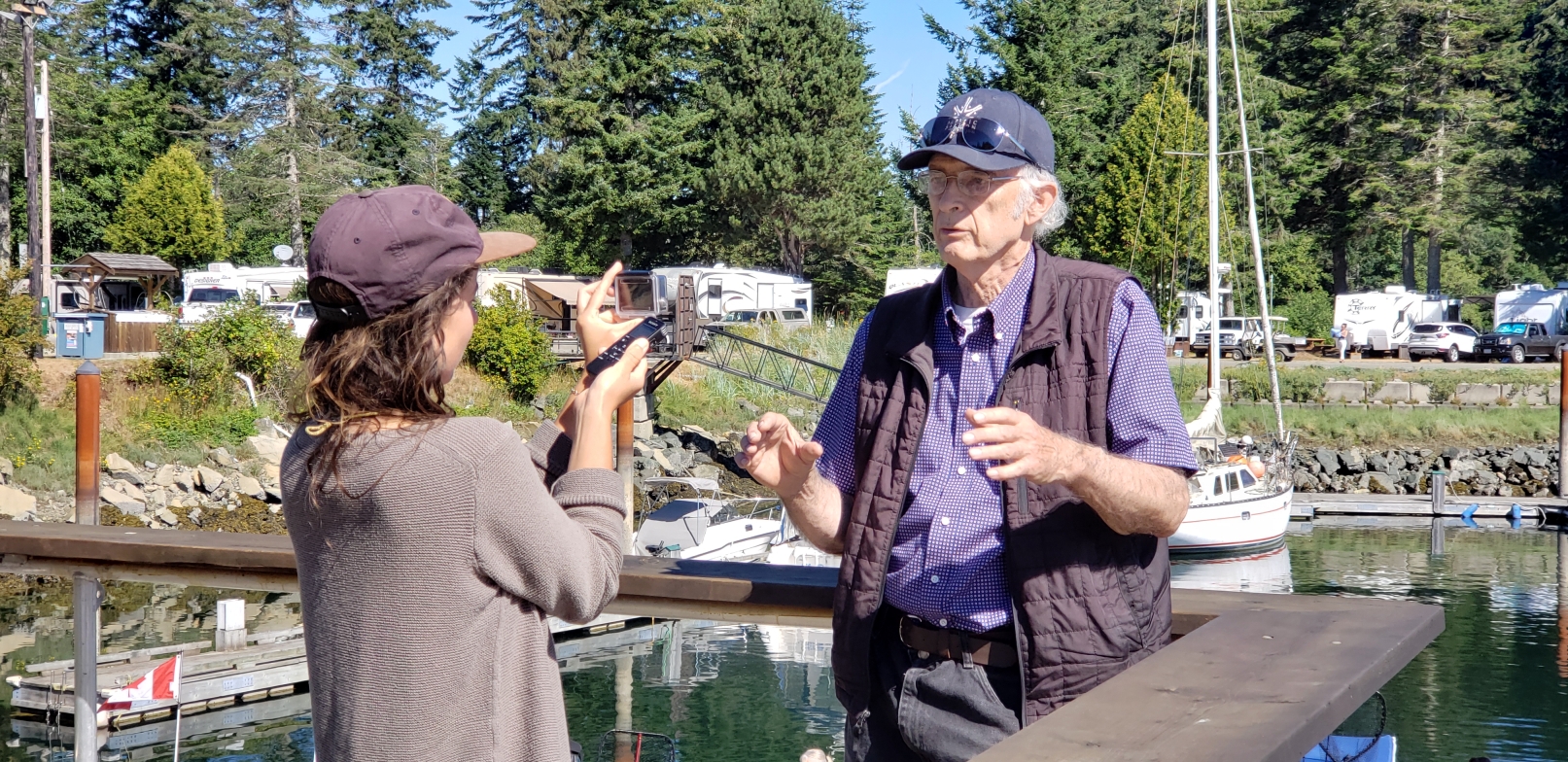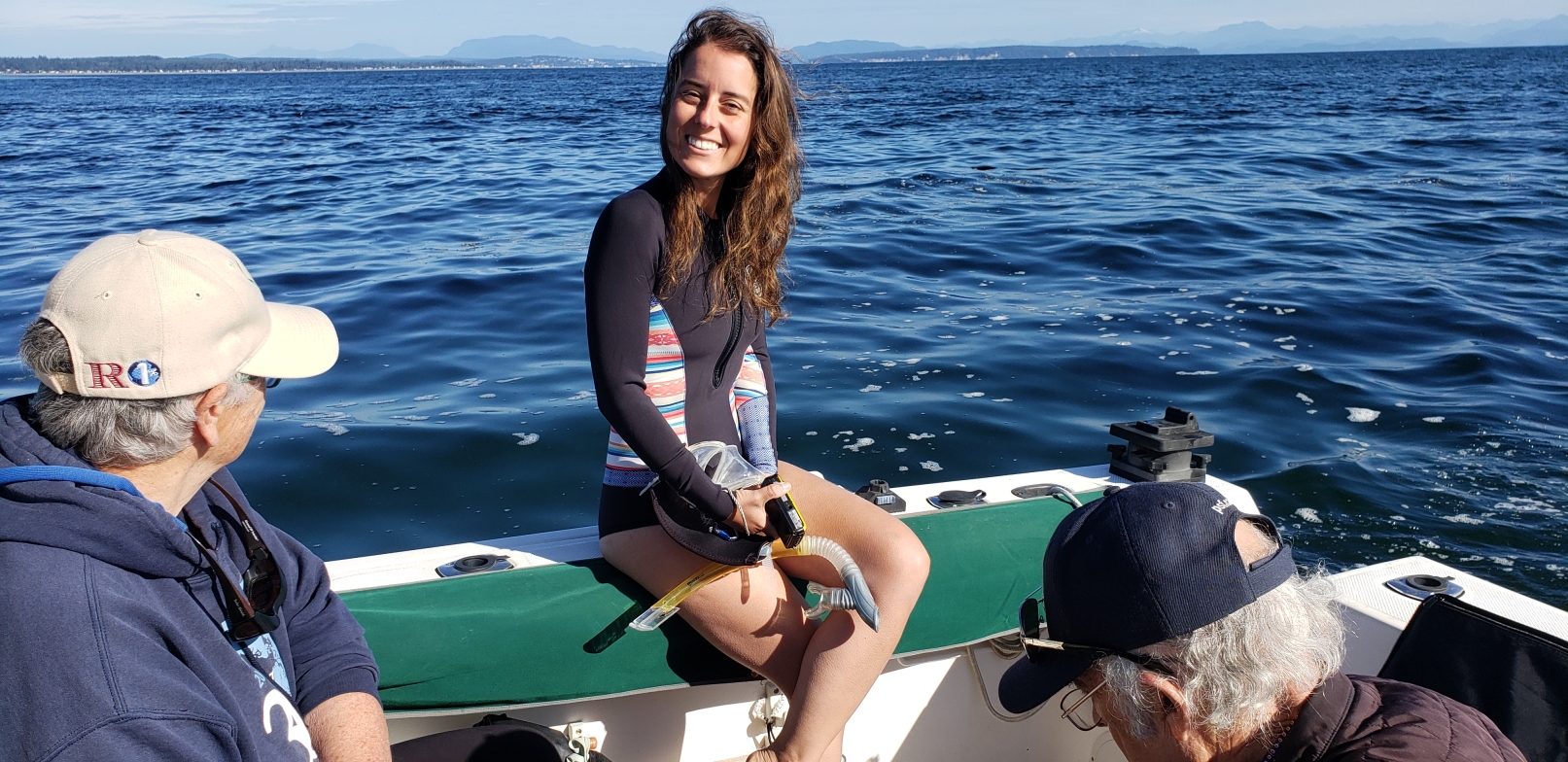Coastal Restoration Update August 2020
Director Bill Heath and bull kelp
Bill Heath interview with Maria Catanzaro
Maria Catanzaro touring Project Watershed’s kelp projects
This year Project Watershed’s Coastal Restoration Project is focused on salt marsh restoration and kelp monitoring. We had to postpone our eelgrass work until next spring, as COVID limitations and a variety of staffing changes diminished our capacity. As eelgrass transplanting has higher success rates when performed in the spring, we feel this is an acceptable adjustment.
With the help of volunteers, we did successful saltmarsh plantings in Fanny Bay (read more…). We also continued to monitor our kelp transplants at Maude Reef and Oyster River. We monitored water quality, temperature and light s at these sites and collected GPS waypoints to determine the exact size of the kelp forest.. We now have three years of data.
This past year we tried a new kelp restoration technique whereby we moved small kelp plants attached to individual rocks from the healthy Oyster River donor site to another area where bull kelp is struggling to grow. Twenty-three of the small bull kelp plants from the Oyster River remain in our transplant area. Unfortunately the rest drifted away – despite attempts to weigh them down – as they grew their floatation increased and they were taken away by the currents.
Project Watershed Director Bill Heath reports “We have done a survey of the red urchin population in the area; the reds have taken over from the green urchins and there is lots of grazing pressure on saccharina and other macroalgae. The transplant area is very dynamic with many different species. On a positive note there is still an enhanced abundance of juvenile rockfish and it is highest near the kelp work.”
Nikki Wright from Seachange Marine Conservation Society and Maria Catanzaro from the Pacific Salmon Foundation (PSF) visited our kelp research site at Oyster River and our saltmarsh projects. Maria is a researcher working for the PSF on a report looking at the importance of nearshore, habitat connectivity and estuarine habitat to Pacific salmon. She is also looking at climate change impacts to these habitats in the Strait of Georgia/Salish Sea and restoration strategies that are being utilized to adapt to these changes. She toured the projects, interviewed directors Dan Bowen and Bill Heath, and captured video of our work. She will be featuring our work as part of her report, when it comes out we will post it to our website.
Related Posts
Mallard Creek Restoration Update for 2024
Restoration work in Mallard Creek will continue this year, including invasive removal, restoring connectivity, and trial planting of a new riparian species. Volunteer events starting in September 2024.
Volunteer at Kus-kus-sum Chamber of Commerce Event
We are showing Kus-kus-sum off to businesses in the Valley through a Chamber Business to Business event. We are looking for a few volunteers to assist with this event.
Coastal Plant Monitoring
Get involved with our new vegetation community science monitoring program!
Spring Field Trips
Throughout May and June Project Watershed will be taking elementary school classes out on field trips to learn about estuary and coastal ecology and to assist with planting and plant maintenance.
Working Together to Identify Forage Fish Spawning Beaches
This year marks the 5th year of a partnership between Comox Valley Project Watershed Society and North Island College on a long-term study to examine intertidal spawning habitats of forage fish in the northern Salish Sea.
Glen Urquhart Update – Spring 2024
Latest news from Glen Urquhart restoration progress for spring 2024.




